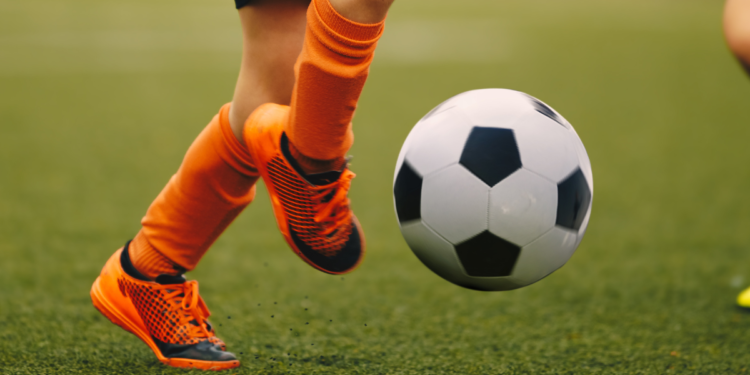Youth sports in the United States is a $19.2 billion dollar market, a size that rivals even the National Football League. According to the CDC, organized sports participation in the U.S. among children aged 6-17 years was at 54.1% in 2020. That translates to approximately 60 million youth taking part in sports activities.
Involvement in team activities provides a variety of benefits for growing bodies and minds. In addition to needed physical activity, for many kids, participation provides an important social outlet and support network that can reduce stress as well. Many athletes may also do better academically as sporting activities require skill sets that include discipline, repetition and memorization that can translate to work in the classroom. Involvement in sports also requires teamwork, communication, problem-solving skills, goal-setting and determination that can all be applied throughout life.
The benefits of chiropractic care have long been acknowledged in professional athletics. Doctors of chiropractic (DCs) can be seen on the sidelines as crucial members of the medical staff for 90% of professional sports organizations including Major League Baseball, all of the National Hockey League teams and all of the teams in the NFL. Not only are DCs well-versed in injury care and management, they also work to prevent injuries and provide strategies for athletes to enhance performance. For our younger developing athletes, DCs offer similar benefits.
The Chiropractic Edge
Chiropractors work with patients of all ages and understand the complexities of how the bones and soft tissues of the body develop throughout childhood and adolescence. DCs strive to support younger athletes to encourage optimal health both on and off of the playing field.
Exams: Chiropractors offer sports physicals and spinal screenings to help protect kids as they develop. Physicals for sports are imperative and are typically required for all athletics in U.S. school systems. These exams help provide a baseline for overall health and detect potential underlying conditions, such as Marfan’s Syndrome, heart issues or joint problems that could lead to complications or injury during play. Though cardiac arrest in young athletes is rare (about 1 in 50,000) heart abnormalities in young athletes can include structural or electrical issues. A family history taken during the process can also provide vital information for potential conditions that may be inherited. DCs collaborate care with other specialists whenever necessary to support the best interests of athletes’ health and safety. Atypical heart findings, such as an arrhythmia (irregular rhythm) found during a sports physical, for example, would prompt the DC to refer the athlete for further analysis or testing with a pediatric cardiologist.
Screenings: During development, scoliosis screenings are also important for all children to ensure potential cases are caught early, monitored and managed appropriately. DCs are often called into schools to provide this service but also include screenings in their offices during sports physicals and as part of office visits with children and adolescents.
Doctors of chiropractic routinely analyze posture and recommend ways to correct any imbalances found. Tech Neck is currently a very concerning issue amongst youth worldwide and the altered posture and symptoms that come with it can affect the health of youth, set them up for injury and influence sports performance. DCs offer a variety of interventions to correct the unhealthy posture of Tech Neck and help kids lay a foundation to support future spinal health and avoid premature joint degeneration and deformity.
Performance Enhancement: Agility is a main factor when enhancing performance. This can sometimes be a challenge for kids undergoing growth spurts and having to periodically re-learn how to coordinate a taller, larger body. Chiropractic care can help developing athletes with strategies to maintain balance, stability and flexibility so they keep their game strong:
Balance: Enables the athlete to be agile and exert their body with greater strength, speed and precision. Imbalance can inhibit performance or contribute to situations that can result in injury. DCs work with muscular imbalances between flexor and extensor muscle groups and provide exercises for athletes to gain and maintain stability and increase proprioceptive skills which allow for the body’s ability to inherently sense movement, action and location.
Stability: Allows the body to quickly return to a state of equilibrium after it is disrupted (eg. from a sudden movement or quick turn.) Stability directly affects an athlete’s resilience and allows for a strong solid foundation on which to be grounded or defend from opponents. Chiropractic care can help stabilize skeletal inequities through spinal adjustments, restore optimal alignment and address issues such as gait issues, uneven shoulders or hips that can affect both balance and stability.
Flexibility: Provides optimum range of motion (ROM) that is needed to maximize speed, strength and overall performance. In track, for example, increased flexibility in the hip and muscles of the leg can allow for a longer stride or ability to position the legs for a hurdle. Flexibility also plays a role in injury prevention; rigidity in tissues that require a specific ROM can more easily lead to sprain/strain injuries.
Injury Recovery: Two of the most common injuries that arise from participation in sports include head injury (concussion) and sprain/strain of the spine and/or the extremity joints. DCs on the sidelines are trained to assess injuries when they occur and provide early interventions for healing. In the case of head injuries, DCs understand current concussion guidelines and how to assess for brain injury, communicate with emergency services, determine a need for imaging studies and safely stabilize the head and neck to minimize further damage or complications.
A concussion is a type of traumatic brain injury, not unlike what is experienced with whiplash. A bump, blow or jolt to the body causes the head to move rapidly back and forth affecting the brain within the skull. After any type of injury, care should be sought out as soon as possible to mitigate complications and facilitate healing. Though most mild concussions are not usually life threatening, they should be closely monitored. The tissues need time to heal and symptoms can be significant. Athletes and their parents should realize that a concussion is a “traumatically induced transient disturbance of brain function.”
DCs are trained to assess concussion injury and monitor symptoms that may include:
- Affective/emotional function such as mood changes or irritability
- Cognitive functions such as confusion, disorientation, amnesia, mental fog or difficulty concentrating
- Physical symptoms like headache, dizziness, balance issues and visual changes
- Sleep issues such as drowsiness, sleeping more or less or difficulty falling asleep
In sports, as in car accidents, this type of injury is most often accompanied with injury (sprain/strain) to the cervical spine (neck). Sprain/strains also occur in sports in other parts of the spine, shoulder and extremities such as the wrist or ankle. DCs work to keep optimum motion in the affected joints, facilitate healing in the soft tissues and mitigate symptoms to promote complete healing and faster healing times.
Pain Relief and Beyond
As young athletes heal from injury, they often are more focused on getting back in the game as quickly as possible. For parents and guardians, a main concern includes the dangers of painkillers and the possibility that their child will mask the pain with pills and potentially cause more injury.
Chiropractic care is not only drug-free, but is also highly effective for managing both acute and chronic neuromusculoskeletal pain. DCs work to keep optimum motion in the involved joints, provide physiotherapy modalities when indicated, offer exercises to strengthen and stabilize injured muscles and joints, address muscle spasms and recommend nutrition or supplements that can work to reduce inflammation in the body. All of these strategies maximize the healing process to safely get young athletes back to the sport they love.
Whether in sports arenas, on a school team or at a park near home, DCs are a vital part of the healthcare team for athletes. Starting with exams and screenings, doctors of chiropractic work to keep young athletes safe and healthy. DCs provide pain relief and injury recovery and then go beyond those basics to focus on prevention and remain injury free. By adjusting the joints of the spine and extremities to optimize function, offering nutritional and lifestyle recommendations and providing strategies to improve balance, stability and flexibility, DCs provide a competitive edge as they strive to improve the overall performance and resilience of student athletes of all ages.


